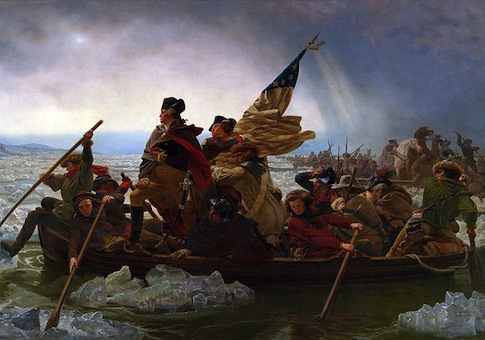In a 1962 column, humorist Art Buchwald, dryly noting the growing importance of political polls, wondered "what would have happened…if there were political pollsters in the early days of this country?" He then concocted some quasi-realistic fictional polling data, such as "[d]o you think the dumping of tea in the Boston Harbor helped or hurt taxation laws in the New World? Hurt the cause of taxation: 79 percent; helped the cause: 12 percent; didn’t think it would make any difference: 9 percent."
Buchwald’s column concludes with the Founders, faced with unpopularity, giving up on the Revolution.
How exactly did the men behind the American Founding revolt against the world’s most powerful empire while often lacking the support of a definitive majority? In The Founding Conservatives: How a Group of Unsung Heroes Saved the American Revolution, David Lefer attempts to answer this question. In his telling, the "go slow" conservative Founders channeled and checked the ideological fervor that fueled the Revolution, preventing excess and failure.
The founding conservatives Lefer identifies include, among others, James Wilson, Silas Deane, Robert and Goveurnor Morris, John Rutledge, Phillip Schuyler, Alexander Hamilton, and John Dickinson. Lefer’s narrative focuses on these important figures during the crucial period between the end of the "Century of Salutary Neglect" around 1763 and the beginning of American self-government under the Constitution.
What united these men, according to Lefer, was their status in the upper echelons of American society, as well as their temperaments, which acknowledged "the propriety of swimming with a stream which it is impossible to stem," as Robert Livingston, another Founding conservative, put it. Lefer calls their sensibility "obstructive compromise: accepting just enough change in order to keep it firmly under control." In other words, their skill was to recognize the direction of public opinion, but also to sublimate it practically to avoid unstable and immoderate schemes and outcomes.
Each of these men, in his own way, helped to save the Revolution. Deane negotiated on America’s behalf in France for arms and funding; Rutledge almost singlehandedly saved South Carolina after the devastating fall of Charleston; and Robert Morris managed the precarious finances of wartime America.
James Wilson’s home served as the site of a climactic, and symbolic, confrontation between upper and lower classes. Quoting Samuel Eliot Morrison, Lefer plausibly ascribes tremendous importance to Wilson’s victory in this skirmish: "Had James Wilson and his friends not defended themselves, this brawl … would have been to the American Revolution what the capture of the Bastille … was to the French Revolution."
In various state governments and the drafting committees of the Declaration of Independence, the Articles of Confederation, and the Constitution, one sees the tensions between radicals who distrusted all forms of centralized power (even, in a surprisingly modern way, economic concentration) and conservatives who said some centralized authority was necessary for stability. One of this book’s main strengths is its vividness, supplied by a firm focus on personalities, a richness of detail, and a briskly episodic presentation.
However, at times that focus on personalities and detail provides superfluous, or even dubious, information. For example, Lefer quotes a primary source, with no additional confirmation, that Rutledge, to maintain discipline during a key battle, "struck [a soldier] with his rattan or twig whip." An assertion that Benedict Arnold’s personal distaste for the Revolution "played no small part in his decision" to defect receives insufficient substantiation. Moreover, to inject drama into his narrative, Lefer portrays the conflict between conservatives and radicals in an overly Manichean manner. Each side in this story has something to add. After all, the Revolution may never have happened at all without the radicals’ zeal.
Lefer’s two other arguments—that Americans, even before Edmund Burke, pioneered modern conservatism as a political philosophy rather than a mere temperament, and that this American conservatism uniquely embraced Adam Smith’s economic system of "natural liberty"—get short shrift. Nevertheless, the primary question of this history—why did the American Revolution succeed—is answered. The Revolution succeeded because it drew strength from a wide span of opinion. And that helps to solve an even more puzzling riddle: Was the American Revolution conservative or radical?
The Revolution was both. It combined the dictates of reason with the wisdom of experience. It fused revolutionary zeal with prudential statecraft. As other revolutions, past and present and future, yield to the radical or reactionary, America’s unique synthesis remains instructive. And as we celebrate the Fourth of July, the lessons of the Revolution are more relevant than ever. Especially since today’s left seeks to reject, or to refashion beyond recognition, the hard-fought and difficult-to-maintain principles of America’s Founding.
Jack Butler is a student at Hillsdale College.
